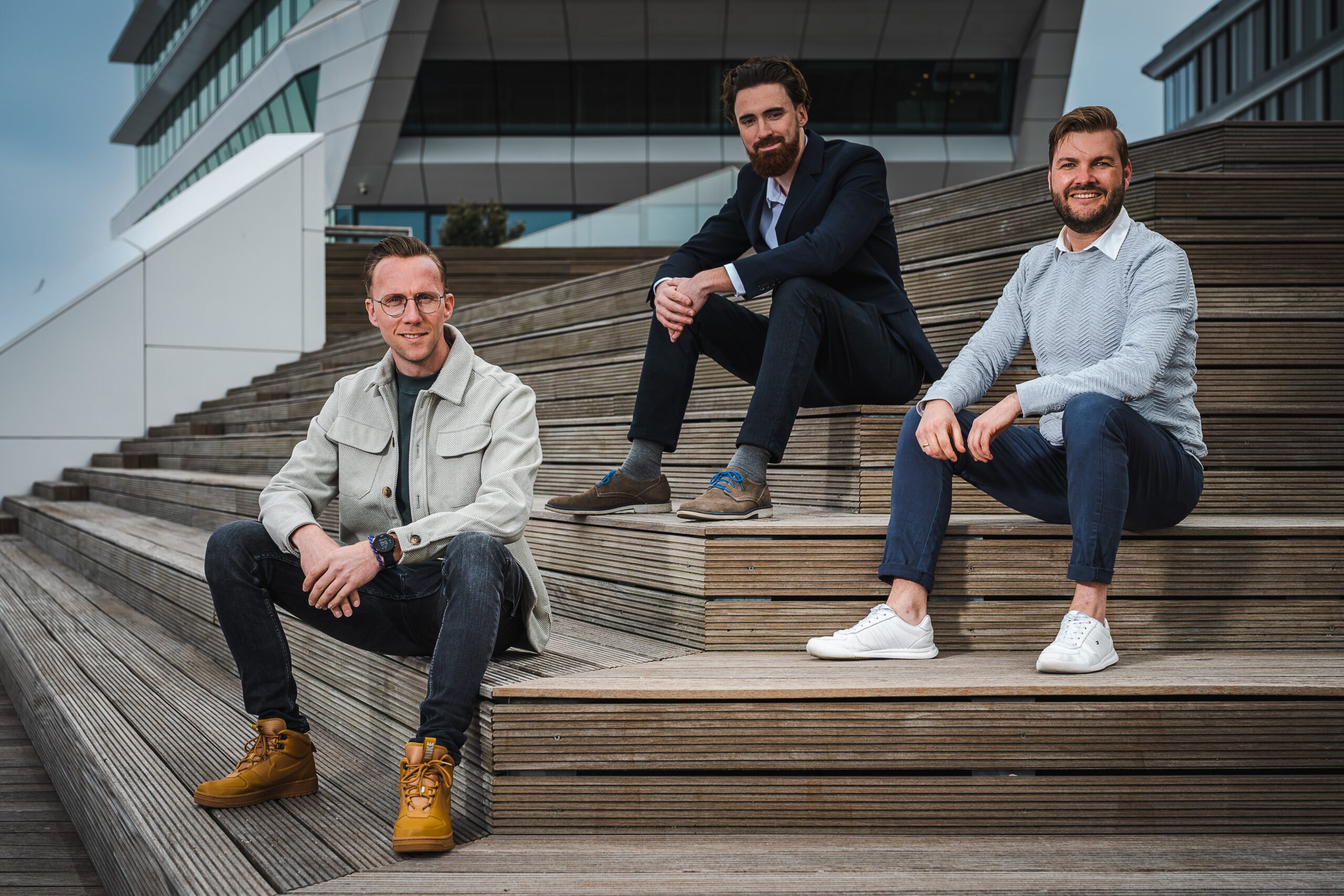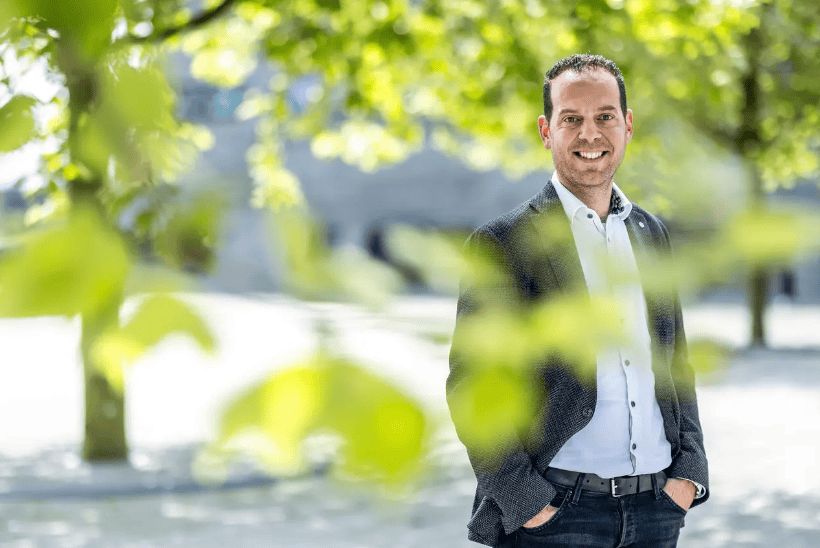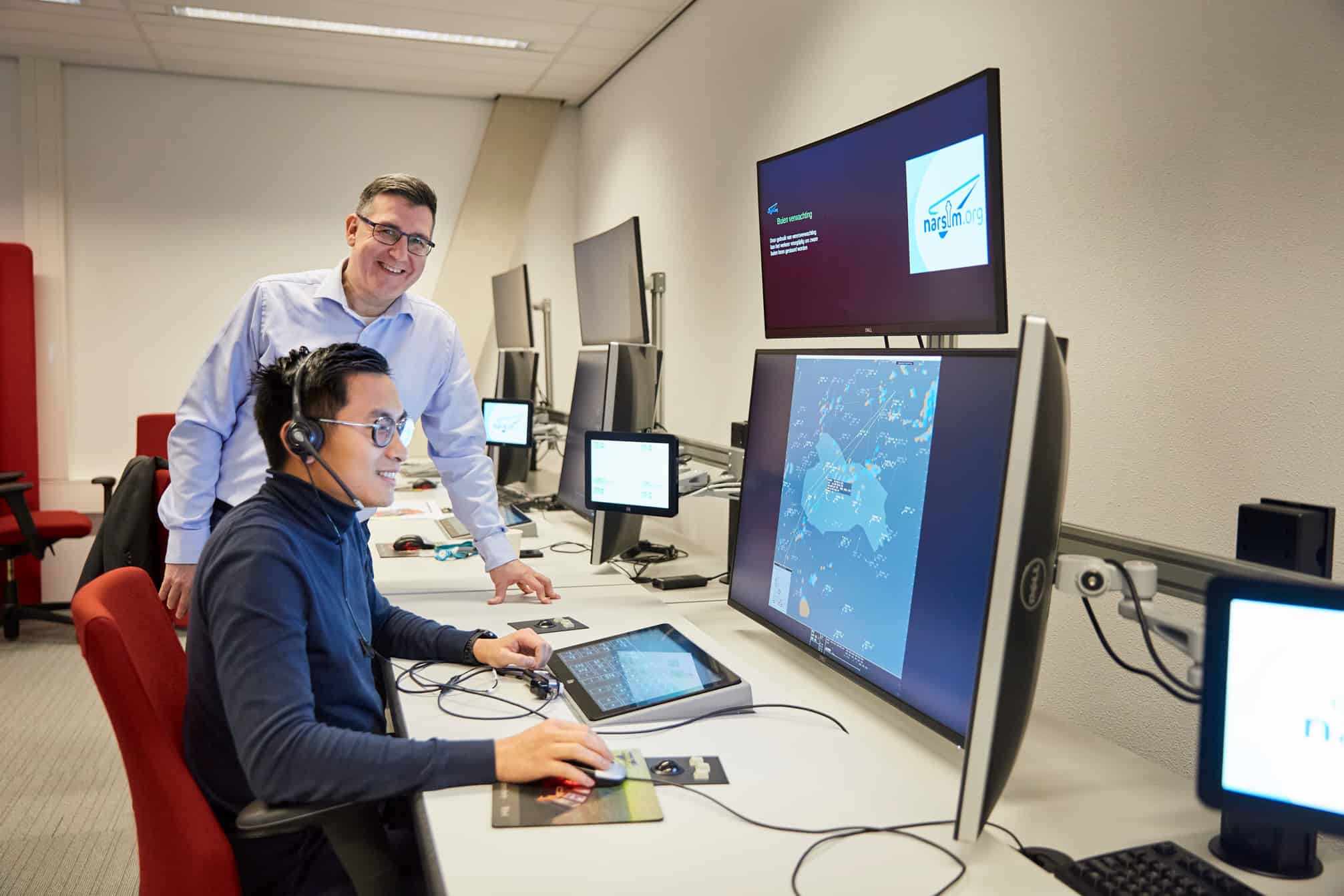
About Flow Your Money
- Founders: Niels Mulder, Danny Wilson and Daan van Klinken
- Founded in: 2018
- Employees: 10 fulltime werknemers
- Money raised: almost 5 million euros
- Ultimate goal: To automate savings, budgeting and investing so that people are able to feel more relaxed and assured about their money.
A checking account at the Rabobank, a business account at Bunq, an investment account and a crypto account. It is becoming more and more normal to use a variety of financial products with different financial service providers. “We want people to have insight and control over their financial situation”, says co-CEO and co-founder Daan van Klinken of Flow. in this instalment of Start-up of the day, he tells us more about his financial tech start-up.
What is Flow Your Money?

“An app and payment service provider that enables users to link all their bank accounts. Our system can recognize all incoming amounts: invoice amounts, mortgage interest refunds, Tikkies, child support, etc. It also recognizes what should happen next with those sumsy, because users are able to set a certain ‘flow’. They can instruct the system to do certain tasks. For example: transfer ten percent from the incoming account to a savings account for a trip around the world. Or automatically transfer the VAT and income tax from an invoice amount to matching ‘piggy banks’. As you can hear, we work with the concept of piggy banks. Based on the idea of grandpa and grandma who had her savings in a money tin for various expenses. Except we do that digitally.”
How did you come up with this idea??
“My business partner, Niels Mulder, and I had worked on many well-known services and apps, such as Buienradar (a Dutch weather app, ed.), but also the apps of PostNL, Volkswagen and Philips. We have worked across all sectors, except not in financial services. It seemed to be under lock and key. And yet a lot of people lie awake at night worrying about their financial situation. We wanted to do something about that.”
“To gain experience, we then started freelancing within the financial sector in addition to our other work. We got to work at Yolt in the UK. That’s an app where users can link their bank accounts and get insight into what they spend. We took that company from 0 to 300,000 customers. We noticed that people experienced a wake-up call when they saw what they were spending their money on. But we also noticed that after three months, people stopped opening the app. So, why was that? Well, it turned out that people are not keen on constantly looking at their own financial behavior. It’s a bit like a scale. You’d rather not step on one if you’ve gained weight. Then you think: ‘I’ll step on it once I’ve lost weight.'”
“We were able to give users insight into their financial expenditure on Yolt, but we weren’t really able to do anything to help them keep a good grip on things. What we also noticed as freelancers, was that it was difficult to separate your VAT and income tax. All around us we saw that freelancers didn’t even bother trying. That was the reason for us to develop a platform ourselves that could do just that.”
How does that work, what kind of technology is behind it?
The app is the front end. The back end is made up of several parts, but the most important element is the rules engine. That’s an engine that contains all the intelligence and all the rules that you need to create certain workflows. A very large part of those rules comprise the conversion that Flow makes between the banks and our app.”
“As far as the technology is concerned, we want to offer an AI version of the app soon. This means learning from people’s financial behavior by using artificial intelligence. Nobody has those insights yet, banks only see what people do within their own bank, whereas Flow is linked to all banks. We want to use that knowledge for the consumers of tomorrow. They are less inclined to arrange things themselves. At the moment, the system is basically still a bit like cruise control with Google maps. Ultimately, we want to build a Tesla without a steering wheel: users are in control and set their own goals, but the system determines how they get there.”



What has been the biggest obstacle so far?
“In financial services, you are required to comply with strict European laws and regulations. We have two licenses: the AIS and the PIS. AIS means we are allowed to look into the accounts of our users. PIS is a more extensive license, which allows us to make payments on behalf of our clients. Obtaining these licenses was a lengthy and meticulously painstaking process. I think finding investors who understand that costs come before benefits and who are also willing to grow with you is a huge challenge for fintechs.”
“Another challenge is the banking sector. A lot of banks are not very happy about our idea. They want to keep their clients to themselves. Even though the EU stipulates that they are obliged to give their clients the option of sharing their data with other parties. And then, of course, there is also the trust of customers themselves. Those strict licenses help in part, but we’re not a major, well-established organization yet. So we really had to build trust by leveraging the authority of partners. For example, we made an incapacity to work buffer agreement with ZZP Nederland.”

What is your revenue model?
“We have a free version and a premium version with a lot more features. Then you pay €2.99 per month. If you use the app for business purposes, then it will cost you €6.99 per month.”
How far are you at the moment?
“We currently have around 15,000 downloads. Meanwhile, more than a million euros per month is being processed through Flow. That is quite a milestone. We have also just raised €3.5 million in an international seed round. Ultimately, we want to go global. People still often think: ‘I’m not going to let an AI handle the allocation of my money, I’ll do that myself’. That’s gradually going to change, just like it will with with self-driving cars. Our app can process data from all banks, but also for other financial purposes, such as investment accounts and charities.”









